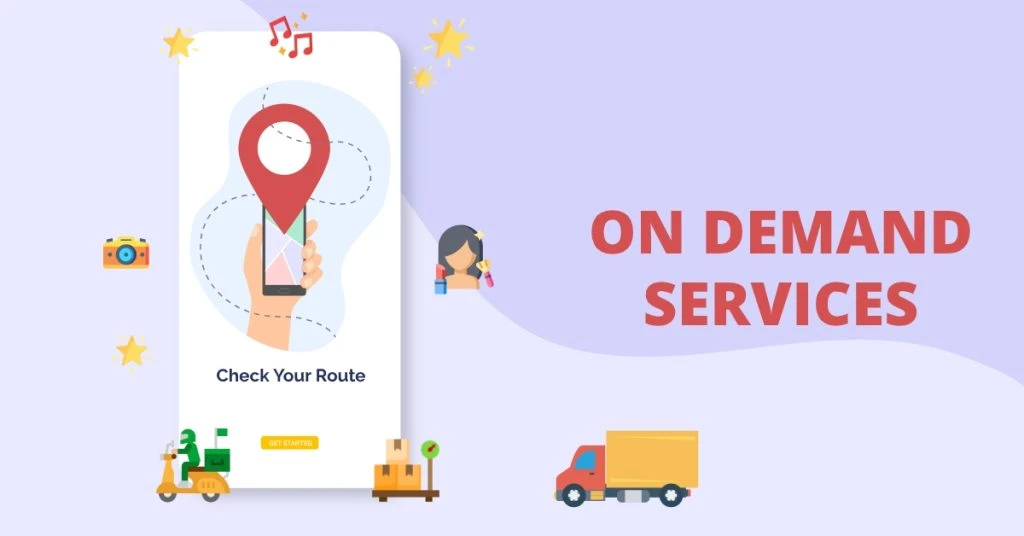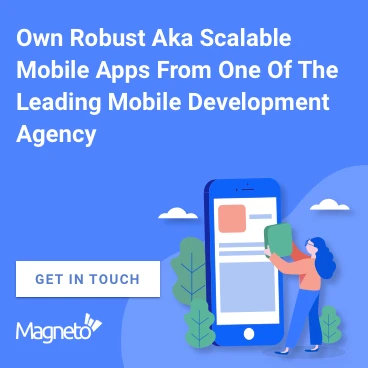6 Reasons Why On-Demand Business is a successful Model for Startups

Imagine a world where everything is available at the click of a button. Need a cab? Need food to be delivered as soon as possible? Need groceries but have no time to go to the market? Need your laundry to be collected from and delivered to your place? Everything is available at the click of a button.
At one point in time, living in a world like that might have felt like a distant dream, but technology has indeed transformed that dream world into reality. In the 21st century, this is the world we are living in, and it is expanding at an extremely rapid pace.
The development of new technologies has shattered the notions associated with thousands of years of operating businesses. The mentality that was associated with establishing businesses in the yesteryears was to have ownership. Now ‘Access’ has replaced ‘Ownership’ as a keyword in modern-day businesses.
This simple transformation has generated a series of reverberations in the economy. This movement has caused a tectonic shift in the complete framework of the industries and the ways they tend to operate.

As both large and small businesses try to decrease their costs by taking advantage of outsourcing facilities, the market for on-demand services exhibits further expansion. This move not only helps them to reduce costs but also to increase flexibility, thereby maintaining their competitive advantage in the economy.
The development of superior application technology, communication networks, and cloud storage facilities have further provided an added boost. These advancements led to the development of applications and software development for startups that are targeted at providing exactly the services that the customer desires whenever they require it.
This phenomenon has led to the emergence of several mobile app development companies in the industry that help to build such applications for increasing customer convenience. This kind of development led to a lot of mobile app users to eliminate the additional hassle of carrying out some tasks manually that can be outsourced to some third party.
What are On-Demand Services?
On-demand is becoming the most trending industry in the market, providing anything from traditional transportation and food services to performing personal and highly specific chores. Hence, at this point, it is essential to understand what we mean by on-demand services.

The term ‘on-demand services’ refers to the kind of services that exactly match up to the demand that the customer has. That is, it provides the specific services that the customer would require. The following are the attributes that on-demand services are characterized by:
- Variety
- Accessibility
- No compromises
Let us talk about each one of these attributes in detail.
- Variety:
This refers to the ability of the consumer to select their favorite brand, restaurant, or laundry. You can then customize your orders according to your preferences, and make the purchase. The basic idea behind the name is that a service is not ‘on-demand’ if it is not able to cater to the specific needs of the customers.
The presence of variety leads to the need for exploring the needs of the industry, understanding what the customer wants, and then catering to those needs. This point would also mean that there should be a provision for customization of the services in a way that would provide tailor-made solutions to the users.
Even then, the business need not remain specific to those needs that have been identified. The company can provide options that the customer might not have thought would be available. This quality would help them distinguish themselves from the other market players.
- Accessibility:
The term refers to the fact that the users should be able to avail services then and there and not at a later date. A service cannot be termed as on-demand if it is not able to be delivered as and when demanded or scheduled.
If it is not delivered at the time at which it is demanded, then it creates a loophole by providing the customer enough time to look for the same service elsewhere. This gap might also allow them to discover services that they might deem to be a better option than the service choices they already found.
Bridging the gap might be implemented in terms of decreased delivery times, order tracking, keeping more inventory in own warehouses as compared to having to pick it up from third party warehouses.
- No compromises:
This attribute means that settling for an alternative is not an option in the on-demand services industry. Services that are catered need to be personalized to meet the exact demands of the consumers.
The key to ensure that is to research the competition and include advantages that other competitors would not be able to match up. Through this approach, the aim is to create an inimitable business model that would establish its presence in the market through its uniqueness.
From the above factors, we can conclude that an on-demand service revolution is not one that would require a lot of venture capital funds or marketing gimmicks. It is one that requires the ability to identify a gap that exists in the service industry and find ways of filling that gap.
6 Reasons Why On-Demand Business is a successful Model for Startups:
- Technological Advancements in Business Applications:
The first step of the digital revolution in the on-demand services industry came through the internet, which was through the websites. This step would include the booking of appointments or scheduling of deliveries. Even then, it was after the introduction of smartphones that the on-demand services industry showed a massive boom.
These days, anyone who is exposed to advanced tech such as smartphones gets used to the interface and is aware of how on-demand applications work. It’s the first thing that people, even of the old generations, try to learn. Booking a cab on an on-demand transportation services application is the essential task that people across all age groups know nowadays.
As a result, these customers, who were dependent solely on web portals before, are migrating to mobile applications that can be downloaded and installed on their smartphones. This shift provides additional convenience of having a dedicated app that can render a particular service.

- Gaining Competitive Advantage:
Thus there has been a mushrooming number of startups that operate in the same industry. These players are all trying to gain a competitive advantage in the same.
Related: Things that STartup Should Avoid While Developing On-Demand Apps
Some examples of applications that operate in the on-demand services industry would include apps such as Uber for transport services, Grofers for groceries, Swiggy for food delivery, and Laundrapp for laundry services.
The success of this industry can be attributed to the increase in quality, accuracy and speed, better customer service, and distinct values of the businesses that operate in this industry. These values have led to on-demand startups providing greater convenience, the industry staying technologically updated, and thus, being highly efficient.
This advantage provides an added incentive for modern youth to use their ideas to streamline the process further as well as to manage their startups in a highly efficient way.
But this has also decreased customer loyalty, especially for price-sensitive customers. That is, if the same product or service is available in the market at a lower price, the customer would ideally prefer the service provider who is offering better value for the same or a lower price point.
This shifting loyalty has also made the market for both on-demand applications, as well as mobile app development companies increasingly competitive. This environment has been of great value to innovators, who can formulate an out-of-the-box idea and transform it into a profit-generating business model.
- Increase in the Number of Investors Who Would Be Willing to Invest in the On-Demand Market:
Big players in the startup industry who are flush with capital would be willing to ride on the wave of growth that the on-demand industry has showcased over the years. The radical shift in consumer behavior is something that they would want to encash on. Hence, it is only logical that they would be willing to invest millions in disrupting even more industries and also focus on overseas expansion.

UrbanClap managed to raise $75 million in its Series E funding in August 2019. Swiggy raised $113 million in its Series I funding round in April 2020. These instances indicate that investors are having more and more faith in these companies since they are likely to provide a better return on investment in the future.
By looking at the above trends, it is easy to understand that these businesses have indeed been quite profitable for all the stakeholders – namely, the customers, the startup owners as well as the investors.
- Providing Better User Experiences for the Customers:
As we have already acknowledged that users are not always loyal, their loyalty shifts due to the kind of experiences that they gain from using the app. If they come across any app, and it provides them with a better user experience, they would not hesitate before changing from one application to another.
This idea has also led to a rise in the number of innovators who continuously strive to discover insights and meet demands that have probably remained unexplored by the users. If the idea is innovative enough, it will translate to better sales from customers, resulting in customer appreciation of the same.
This continuous process that seeks to update and upgrade existing systems has no doubt led to the emergence of a lot of competition in the industry but also indicates that the on-demand market is not going to become obsolete anytime soon.
- The Shift in Spending:
One of the significant reasons why several industry experts would recommend the on-demand business for startups is due to the tectonic shift that has occurred in spending habits of both customers and companies.
In the traditional business atmosphere, people used to go to stores to purchase products or avail services physically. But in the new system, companies are increasingly migrating towards a more digital form of a business since it is more convenient to book these services with the click of a button.
This system has also reduced the number of intermediaries that are present in the business channels. The presence of these intermediaries would also increase the costs of the offerings made by the business. In the absence of these intermediaries, the costs associated with the firm have gone down.
In the absence of these industries, the time that is required to avail a particular service has also decreased, which has made the process very streamlined for both the business operators as well as the end-users.
- Future Scope of On-Demand Service Applications:
The whole framework of on-demand startups being highly efficient is bound to scale great heights in the future. On-demand mobile apps have completely revolutionized the marketplace for such applications. It has led to a change in consumer buying as well as behavioral patterns.
In the wake of the tide of innovation that has washed over the on-demand application market, these services might end up extending to all spheres of life. This innovation has led to the rise of apps such as Dunzo. It aims at catering to any of your daily needs in terms of delivery. This opportunity might also lead to the development of dedicated apps for services such as gas cylinder delivery, lumber services, as well as repairing of electronic gadgets.
App brands aim at marketing these on-demand mobile applications by emphasizing on how the usage of these applications makes our lives considerably easier. Besides that, these applications maintain specific quality standards when it comes to service delivery, which is an added assurance to the end-user.
In the future, this industry is expected to grow based on the following four values – speed, convenience, accuracy, and quality. This growth will only be possible through the continuous efforts of the mobile app development companies to develop and deliver user-friendly applications that are easier for the customers to navigate through.

How to Enter the Market for On-Demand Economy:
There are very few industries in which businesses cannot think of an on-demand venture to expand into in some way or another. Thus if you intend to do the same, we suggest that you try to access or steer into an industry that you are already familiar with. In case you are not, it is better to get in touch with industry experts who know the industry well enough to provide quality advice.
From that process onwards, we can identify four stages of development in the on-demand industry.
- Finding Your Niche:
Although there are a significant number of players in the on-demand business industry, it is still possible to find a vacant market where you can enter. The first method for doing so is by identifying sectors where technology can simplify the interactions between the buyers and the suppliers.
After finding such an industry, the next step will be to identify the unique selling point (USP) of the business, to put the business idea to test, collect data and conduct an analysis to test whether or not the company can survive the competition.
To deal with the competition in the industry, it is also essential to find the target audience and make free product and service offerings to attract them to the business. This move helps to generate value for the company.
- Building an Efficient App:
Building an efficient application is one of the critical ingredients for success when you’re entering an on-demand economy. The tool should provide all the necessary features and should be simple enough for people from all demographic groups to be able to operate it. The simplicity of the app interface is what distinguishes it from the other competitors in the market.
For a business, the app is the primary tool for communication with the customer. Hence, it should be possible to navigate through the app seamlessly. The app should be characterized by an intuitive UX and an impeccable UI to facilitate us getting what we want in the most organic way.
- Optimizing the Value Chain:
It is necessary to opt for a feature-rich, sleek, seamless, and streamlined interface with great UX to attract and satisfy users in an on-demand economy. But these features alone are not enough. Hence, it is essential to ensure that the long-run value chain is optimized.
An on-demand app is all about providing speed along with convenience. Thus, by reducing the gap between the time that the order is placed and the time of delivery of the order, it is possible to increase the app’s value to the consumer.
An increase in the waiting time for an app provides the user with time to explore the other alternatives. This waiting time might take away some valuable traffic from the app and also give rise to negative reviews.
Thus the best way to go about it would be to work hard to simplify and revolutionize the value chain. This strategy has been opted for time and again by companies, and this has helped them to succeed.
- Attracting Users to Build A Network:
The primary reason behind the existence of the on-demand business model is because of the way that people use technology in communicating with each other. Each on-demand business forms a network that is nothing unlike that of a social media platform.

In such a case, it is easy to understand that in the absence of visitors to your page, and suppliers who provide products or services, the application is a useless tool. Hence, it is crucial to focus on attracting users from the start.
The way to go about it is by attracting tech-savvy audiences from the very beginning since they would be the first ones who are likely to adopt the app. If they like it, they can even publicize it through word-of-mouth (WOM) marketing.
It is also important to showcase the app’s presence at seminars, conferences, and various events through innovative marketing tactics. It is also essential to provide free trials of the products or services for the crowd to become familiar with them.
Since social media has such a vast reach in the present day, these companies can also focus on promoting these applications through collaborations with online tech experts. When the app attracts enough traffic, lowering the prices of the services and goods, coupled with providing personalized offers, would generate momentum, thereby further accelerating growth.
What are the different business models through which on-demand application businesses work?
On-demand application services not only arise out of an existing business recognizing a need for the digital expansion of their businesses. It can also occur from the need for having an online marketplace where different buyers can meet different sellers – thereby giving the buyer a lot of options to choose from and giving the seller access to a broader customer base.
The two different business models that can exist in terms of the development of apps for running on-demand businesses are
- On-Site Model:
The businesses that have some physical existence in the form of retail outlets are most likely to opt for this model. To make the process of taking orders from the customers more efficient, companies might consider this business format. Through this model, the companies can reach out to more customers than their existing customer base.
This kind of model allows for flexibility in terms of order pick up and exchange. Having a physical presence also allows the customer to drop by at the retail store, test out the products that they are planning to purchase and ultimately purchase them through the application, if it provides better prices.
- Aggregator or Marketplace Models:
Such a business model is mostly sought out by startups who do not have either a physical presence or the assets required to run the business or both. In this way, they are in charge of creating a marketplace meant for different on-demand service providers to sell their goods or provide their services.
Hence, it relieves the business owners from the added headache associated with developing an app or a website. To register themselves on the application interface, they are only required to pay a nominal fee for the listing of the business on the app. A specific portion of their profits per order goes to the application developers.
The admin team usually handles the transactions. They earn a certain percentage of the business’ profits through the sales that are generated.
For users, this model is beneficial because it helps them bypass the problem of installing too many apps for browsing through similar kinds of on-demand services. This framework helps them compare prices and quality on a single platform.
In the case of an aggregator, the aggregator would provide the services under its brand. It also fixes the price of the products and takes full responsibility for the quality of products or services offered. Some aggregators are responsible for providing pick-up and delivery service personnel.
In the case of a marketplace model, the owners have a broad reach, and they just form a marketplace where buyers and sellers meet. There can be many sellers in the market who are selling the same products or services at different prices. In this case, the buyer has to pick which seller they would want to opt for carefully.
6 Factors to be considered for ensuring the selection of a successful business model
By now, we understand the benefits of venturing into the on-demand application business and the models through which business can be carried out by these applications. But to ensure that you select the perfect business model that is tailor-made for your app, it is essential to look into the factors which would provide an ideal fit.
So let us talk about each one of these factors one by one.
- Degree of Commoditization:
The degree of commercialization is one of the most important factors to consider while selecting the perfect business model since it plays a massive role in determining the overall success of the business. The term ‘degree of commoditization’ is used about the different number of variables that are associated with the product or service that you are selling.
If any product or service exhibits a high degree of commoditization, then it means that it will have a lower number of variables attached to it. Similarly, it is vice versa in the case of a product or service with a lower degree of commoditization.
For example, when you use an app such as Uber for booking cabs, then you only have the option of selecting the type of car that you would want to opt for. But while using a hotel booking application like MakeMyTrip, you will have to choose the number of days of the booking, the specific dates, the number of people, location, and many such other variables.
This phenomenon can also be understood through the difference between choice and anonymity. Some applications offer their users a higher degree of freedom as compared to some other applications.
Some apps providing extremely personalized services (such as UrbanClap) offer its users an added degree of freedom – they can choose their service providers. But, in an application such as Uber, the options available to the end-user are limited as compared to that of UrbanClap.
When it comes to Uber, the user is confined to only selecting the mode of transport and its class. He does not have the liberty to choose the model of the car or the driver. Thus, UrbanClap provides several choices to the customer, whereas Uber ensures the anonymity of its service providers.
Thus, the degree of commercialization, along with the degree of freedom, becomes one of the most significant determining factors for identifying the business model.
- Platform Used and Supply-side Characteristics
This criterion refers to the selection of between an on-site, aggregator, and marketplace type of a business model. For a startup to remain in business and earn profits, it has to aggregate the small enterprises or choke the supply of goods and services.
Achieving the aggregation of small businesses is relatively easier than the latter option. There exists the need for a platform where these businesses can converge to facilitate such a gathering of companies.
- Pricing Structure:
One of the most critical factors one must consider to come up with a relevant on-demand business model is pricing.
The degree of commoditization is one of the key factors behind the determining of the pricing of the products or services offered. For example, if the product has a lot of varieties and many degrees of freedom, then the price of the services or products will have to be uniquely determined.
On the other hand, if the product has only a few choices available, then there might not be a lot of variations in pricing. Based on this, applications might choose to opt for a single pricing structure or that which applies to the complete platform.
- Stakeholders:
The number of stakeholders in the business also affects the business model. A simple on-demand business will have a minimum of two stakeholders. For a relatively simple business model like that of Dunzo, the stakeholders would be the customers and the drivers.
In other apps, there exist more complex structures. For example, food delivery apps such as Swiggy and Zomato do not have a kitchen facility or infrastructure of their own, so there is a third stakeholder in the system apart from the operators and the drivers – which are the restaurant owners.
- Getting your fleet vs. using the partners’ fleet:
Before setting up the business, it is essential to focus on the logistical aspects of the business. This activity includes making decisions about where to source the fleet from – whether to invest in a separate fleet or to outsource it from someone. This activity would also involve doing cost calculations regarding the same to figure out the best option.
To understand how the pricing decision works, we take an example of the food delivery market. In the food delivery business, there exist two different kinds of delivery models, namely:
- Using your fleet to pick up and deliver the food.
- To rely on the restaurant to use it’s fleet and delivery boys to do the same work.
Since both models cannot be implemented simultaneously, we have to concentrate on just one of these alternatives.
- Instant Delivery Model vs. Scheduled Delivery:
One of the other significant factors that are to be considered while deciding a business model is whether to opt for an instantaneous model or a framework that is based on delivery schedules. This model is majorly applicable to on-demand startups because it boasts of delivering products and services as and when they are demanded.

For example, for a taxi startup, offering the option to avail the service now, as well as the option to schedule the cab, provides the customer with a range of selections to choose from.
Even though it is essential to start with a particular model during the start of the business, it is not necessary to stick to the same model. In such a case, a company can decide to start with one and gradually expand into the other model when the business is on more firm grounds.
In this way, if we choose to opt for an instantaneous on-demand business model, we can gradually shift to one which offers scheduled delivery and vice-versa.
Conclusion:
The on-demand industry is the future of business since it provides the customer with whatever they need, available at the click of a button. This trait promises to fulfill any and every demand of the consumer, thereby providing instant gratification of every one of their needs.
The development of smartphone technology and the existence of apps to meet every one of the user’s demands provides a sense of entitlement. This factor has also made them impatient – so they expect the services to be delivered fast and also at cheap rates.
Thus, on-demand app development companies face an added pressure of innovating and pushing harder to improve and optimize their value chains, simplifying features, and ensuring that the app runs smoothly.



